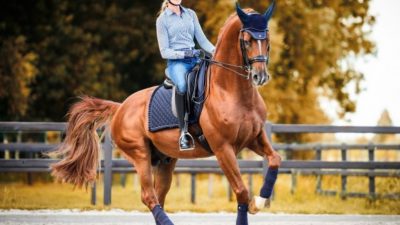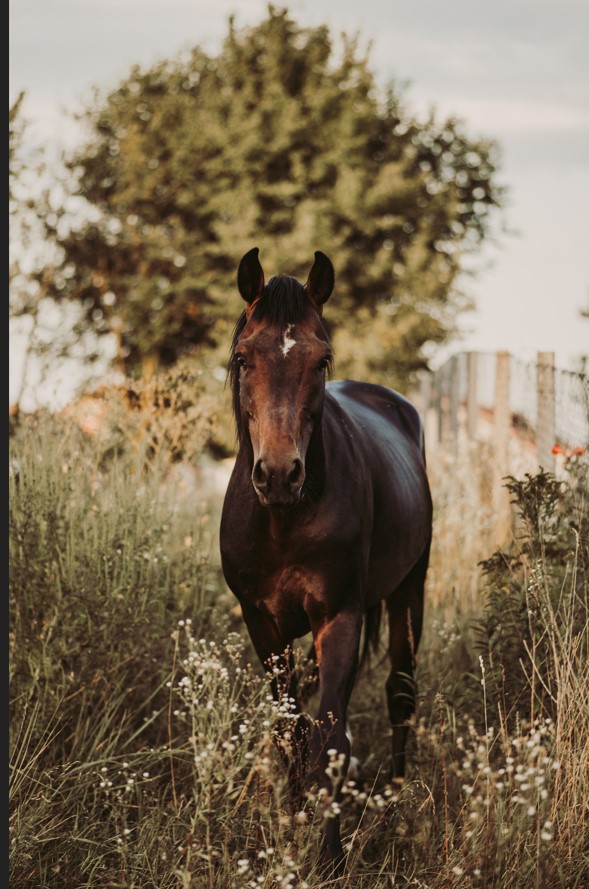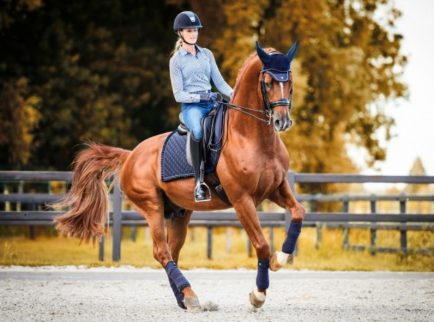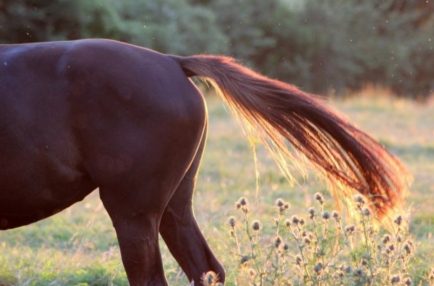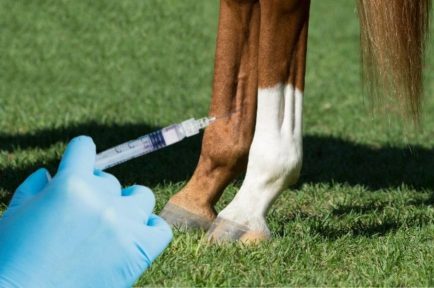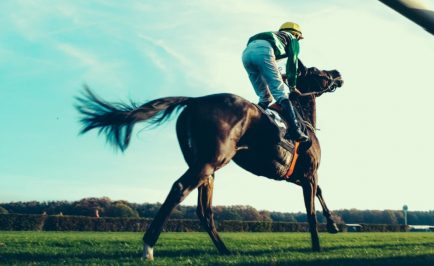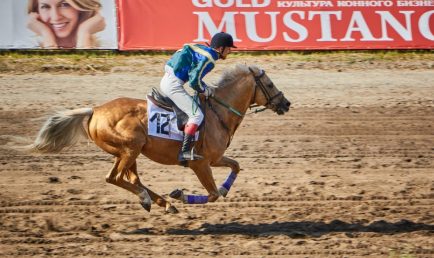Concentrated Rations: 1. Match your horse’s diet to his individual energy needs. Feed only as much high-energy concentrate as necessary. 2. When extra energy is required or your horse is losing weight, feed oats or a low-starch commercial mix fortified with up to two cups of vegetable oil. 3. Make corrective changes to his diet gradually to reduce the likelihood of digestive distress. 4. To prevent him from bingeing, keep all high-energy feeds doubly secure. Place them in closed containers behind a horse-proof feed-room door.
Grazing: 5. Limit access to lush pasture, particularly when it is emerging in the spring or recovering after drought. Gradually introduce horses unaccustomed to turnout: Begin with 15 minutes of grazing a day, then build up to the desired turnout time over the next several weeks. If your horse is overweight, a cresty easy keeper, has had laminitis in the past, or is otherwise susceptible to the condition, consider muzzling him when you turn him out on lush pasture. 6. Offer quality grass hay tested for starch and sugar. Avoid clover and alfalfa as pasture and hay for susceptible horses.
Healthcare: 7. Prevent systemic illness that can lead to laminitis through regular deworming, vaccinations and other routine health maintenance.
Hooves: 8. Have his hooves trimmed regularly. 9. If your horse is lame, support the opposite “good” foot as well as the one with the problem to reduce the risk of the sound limb developing mechanical laminitis. 10. Avoid long gallops over extremely hard ground, which can subject your horse’s hooves to excessive concussion.
This article appeared in the April 2007 issue of EQUUS magazine.
Original article: 10 Ways to Avoid Laminitis (equusmagazine.com)










